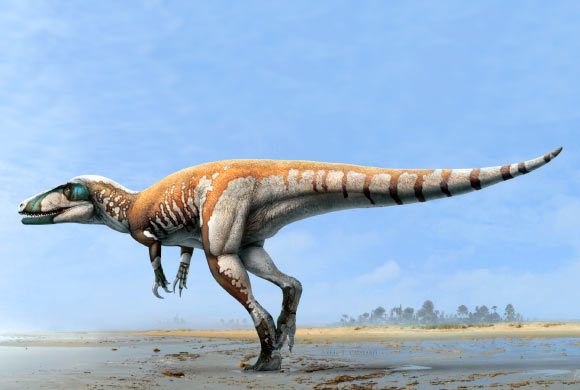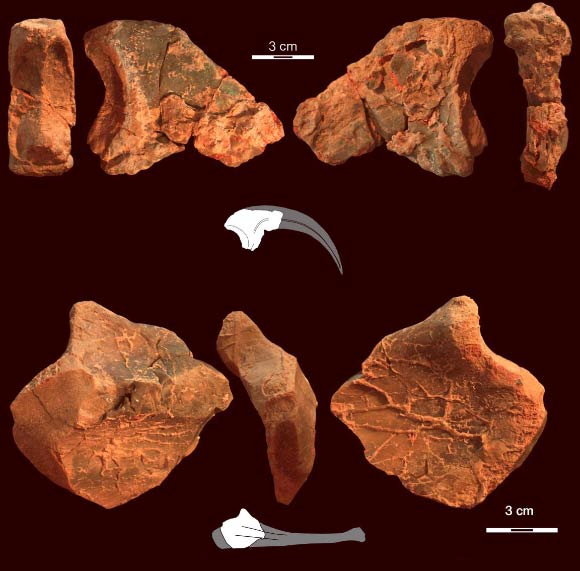A remarkable new species of theropod dinosaur has been unearthed in an underground mine in north-central New South Wales, Australia.
Nicknamed Lightning Claw, the new dinosaur lived roughly 110 million years ago during the Early Cretaceous period.
It belongs to a group of large carnivorous theropod dinosaurs called Megaraptora (megaraptorid theropods).
The species grew up to 20 feet (6 m) in length. It is the largest and only the second theropod dinosaur in Australia known from more than a single bone.
The partial skeleton, including a foot bone, parts of the hip, ribs, forearm, and a giant claw from the hand, was discovered by miners Rob and Debbie Brogan in an underground mine at the Carter’s Rush opal field, 18.6 miles (30 km) southwest of the town of Lightning Ridge, north-central New South Wales.
It was analyzed by a team of paleontologists from Australia and Italy, led by Dr Phil Bell of the University of New England.
“Some of the bones were recognized and manually removed by miners and eventually donated to the Australian Opal Centre in 2005,” Dr Bell and co-authors wrote in a paper published in the journal Gondwana Research.
“An unknown number of bones were not recognized and presumably destroyed prior to or during excavation of what was almost certainly a more complete skeleton than is currently represented.”
Dr Bell said: “I immediately recognized this fossil was something new. When I compared it to other Australian and South American dinosaurs, it was clear it was a megaraptorid which is relatively rare group of dinosaurs, mostly known from Argentina.”
The hand claw of the dinosaur would have been 10 inches (25 cm) in length and would have been used like a grappling hook to catch its prey.
“What is fascinating about this discovery is it changes the popular notion that Australian dinosaurs came from ancestors derived from Africa and South America – instead the Lightning Claw appears to be the ancestor of all megaraptorids, meaning this group appeared first in Australia,” Dr Bell said.
“This specimen provides new evidence that Australia played an active role in the evolution and radiation of at least one group of apex theropods. Significantly, the Australian origin of megaraptorid theropods is echoed by eusuchian crocodylomorphs wherein Isisfordia duncani from the earliest latest Lower Cretaceous of Queensland suggests the origin of this clade also has an Australian root,” the scientists said.
_____
Phil R. Bell et al. A large-clawed theropod (Dinosauria: Tetanurae) from the Lower Cretaceous of Australia and the Gondwanan origin of megaraptorid theropods. Gondwana Research, published online September 5, 2015; doi: 10.1016/j.gr.2015.08.004









